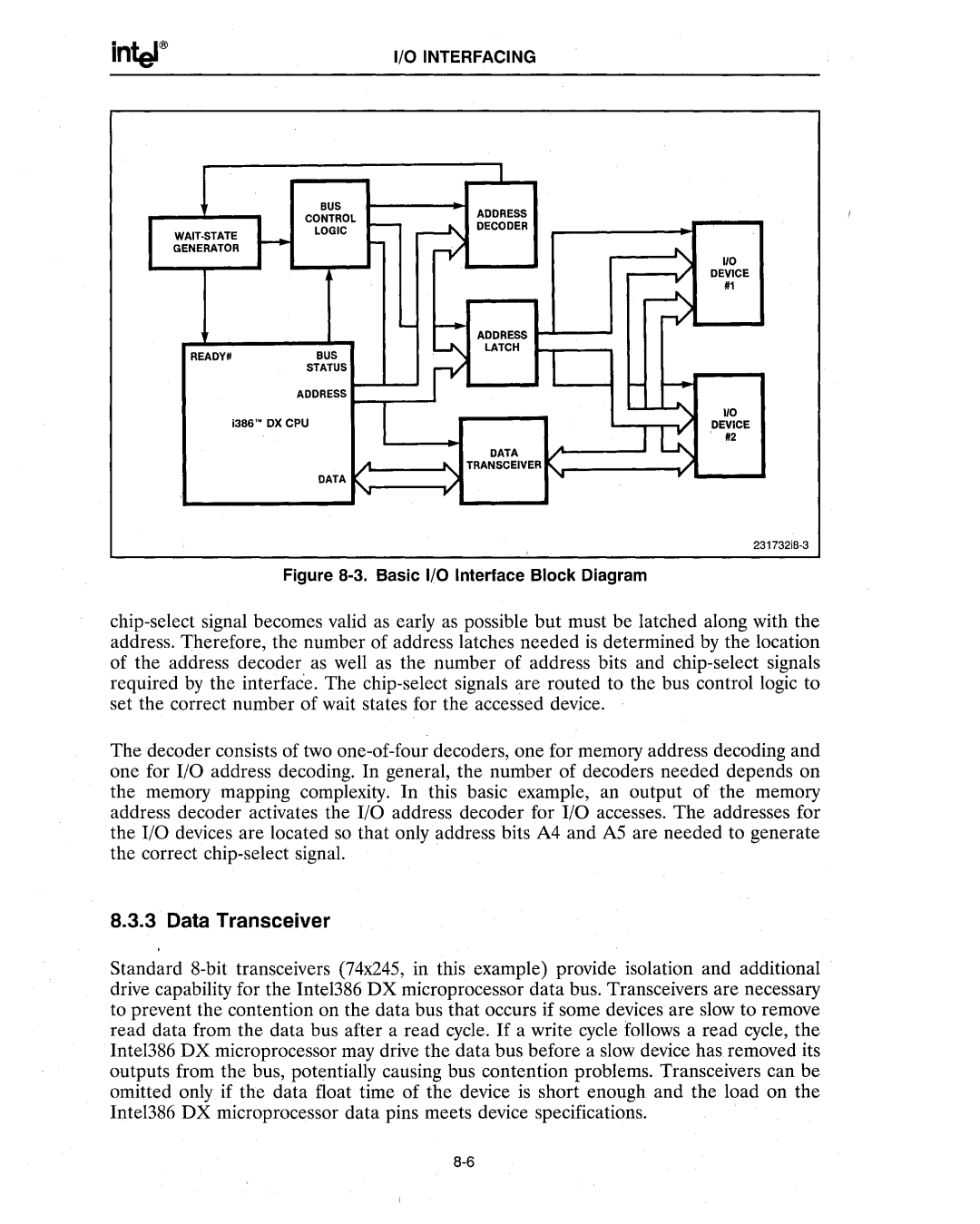I/O INTERFACING
| | | | | | | I | | | |
I | | | BUS | | | | ADDRESS | | | |
| | CONTROL | t-- | | | | | |
| ~ | | ,..-l\ | DECODER | | | |
WAIT-BTATE | LOGIC | | | | |
| I- | | | | | |
GENERATOR | | | rV | | | -" | DEVICE |
| | | | | | | | | 110 |
| | | | | | | | | |
| | | | | - | | | | ~ #1 |
| | | | | | | | -,I | |
| | | | | .~ | ADDRESS | | | |
| READY. | | BUS | | | LATCH | | | |
| | | | - | | | | |
| | | STATUS | | | r | | | : | |
| | | ADDRESS | | | | I- | |
| | | | | | | J .. | |
| i3B6'·OX CPU | | | | | 110 |
| | | | | | ~ | DEVICE |
| | | | | | | | | 112 |
| | | | | | | DATA | ~ | |
| | | | | | | V" | |
| | | A | | | -". | TRANSCEIVER | |
| | | DATA ... | | .. | | .... | .. | |
231732i8-3
Figure 8·3. Basic I/O Interface Block Diagram
chip-select signal becomes valid as early as possible but must be latched along with the address. Therefore, the number of address latches needed is determined by the location of the address decoder as well as the number of address bits and chip-select signals required by the interface. The chip-select signals are routed to the bus control logic to set the correct number of wait states for the accessed device.
The decoder consists of two one-of-four decoders, one for memory address decoding and one for I/O address decoding. In general, the number of decoders needed depends on the memory mapping complexity. In this basic example, an output of the memory address decoder activates the I/O address decoder for I/O accesses. The addresses for the I/O devices are located so that only address bits A4 and AS are needed to generate the correct chip-select signal.
8.3.3 Data Transceiver
Standard 8-bit transceivers (74x24S, in this example) provide isolation and additional drive capability for the Inte1386 DX microprocessor data bus. Transceivers are necessary to prevent the contention on the data bus that occurs if some devices are slow to remove read data from the data bus after a read cycle. If a write cycle follows a read cycle; the Intel386 DX microprocessor may drive the data bus before a slow device has removed its outputs from the bus, potentially causing bus contention problems. Transceivers can be omitted only if the data float time of the device is short enough and the load on the Intel386 DX microprocessor data pins meets device specifications.
8-6

